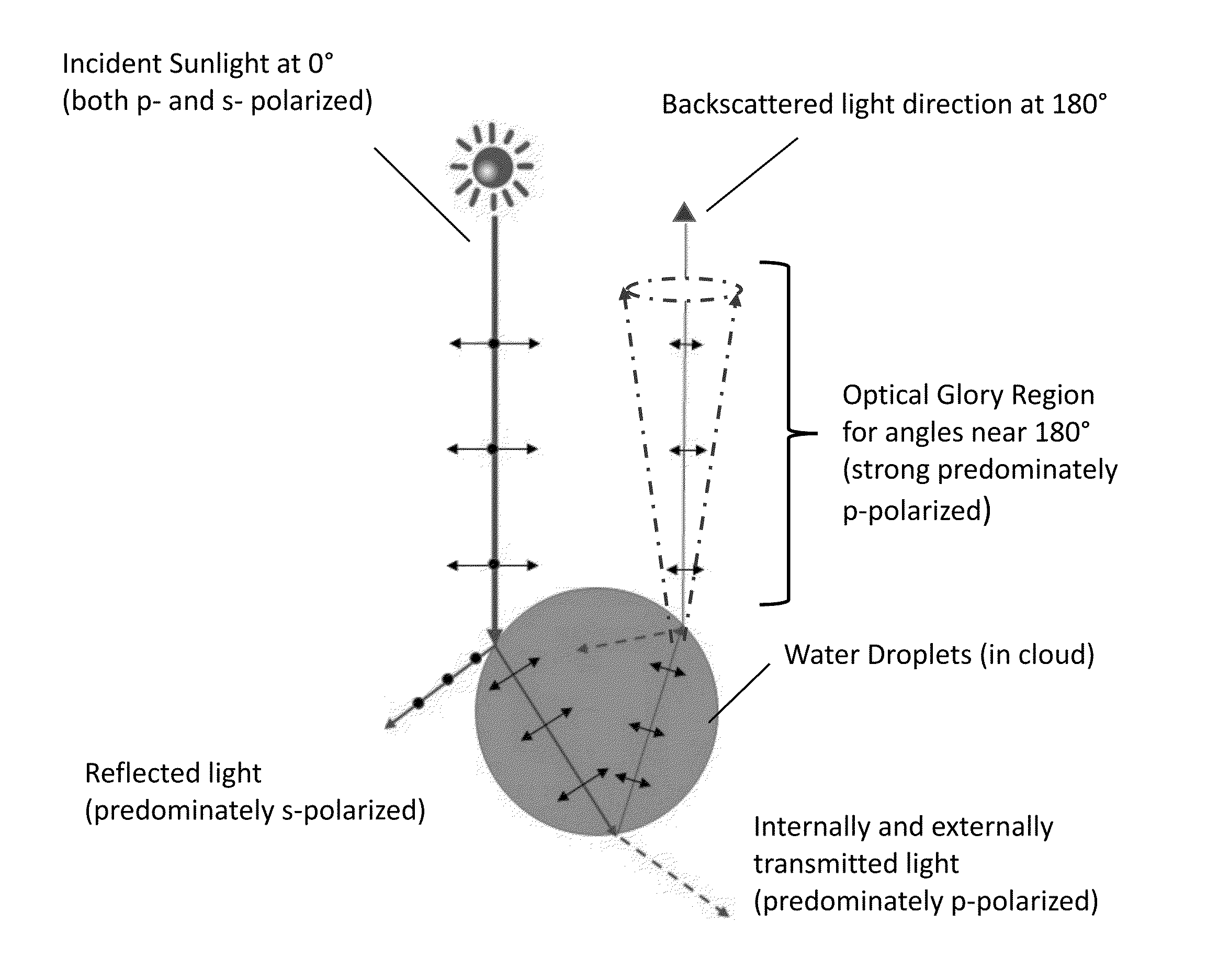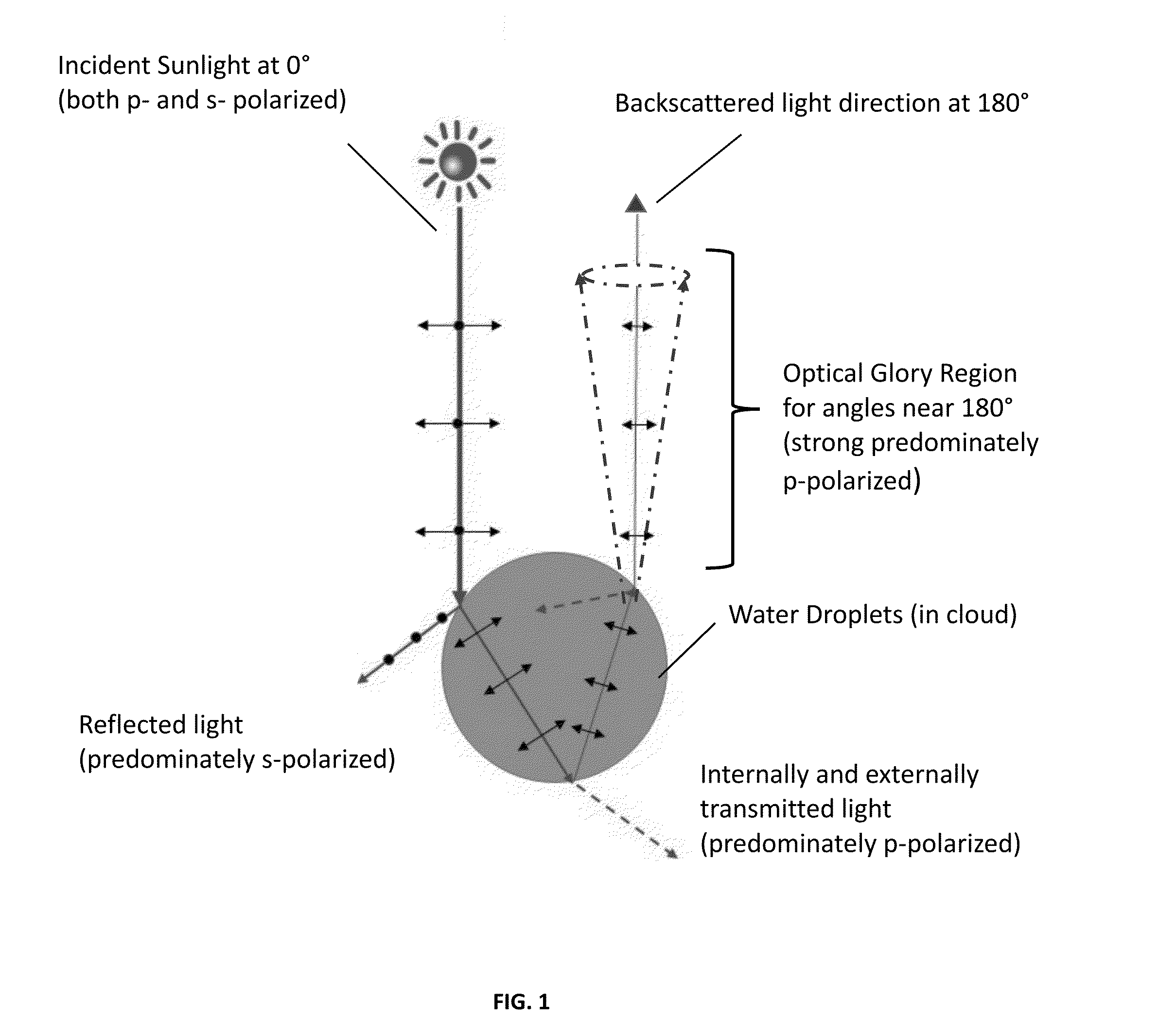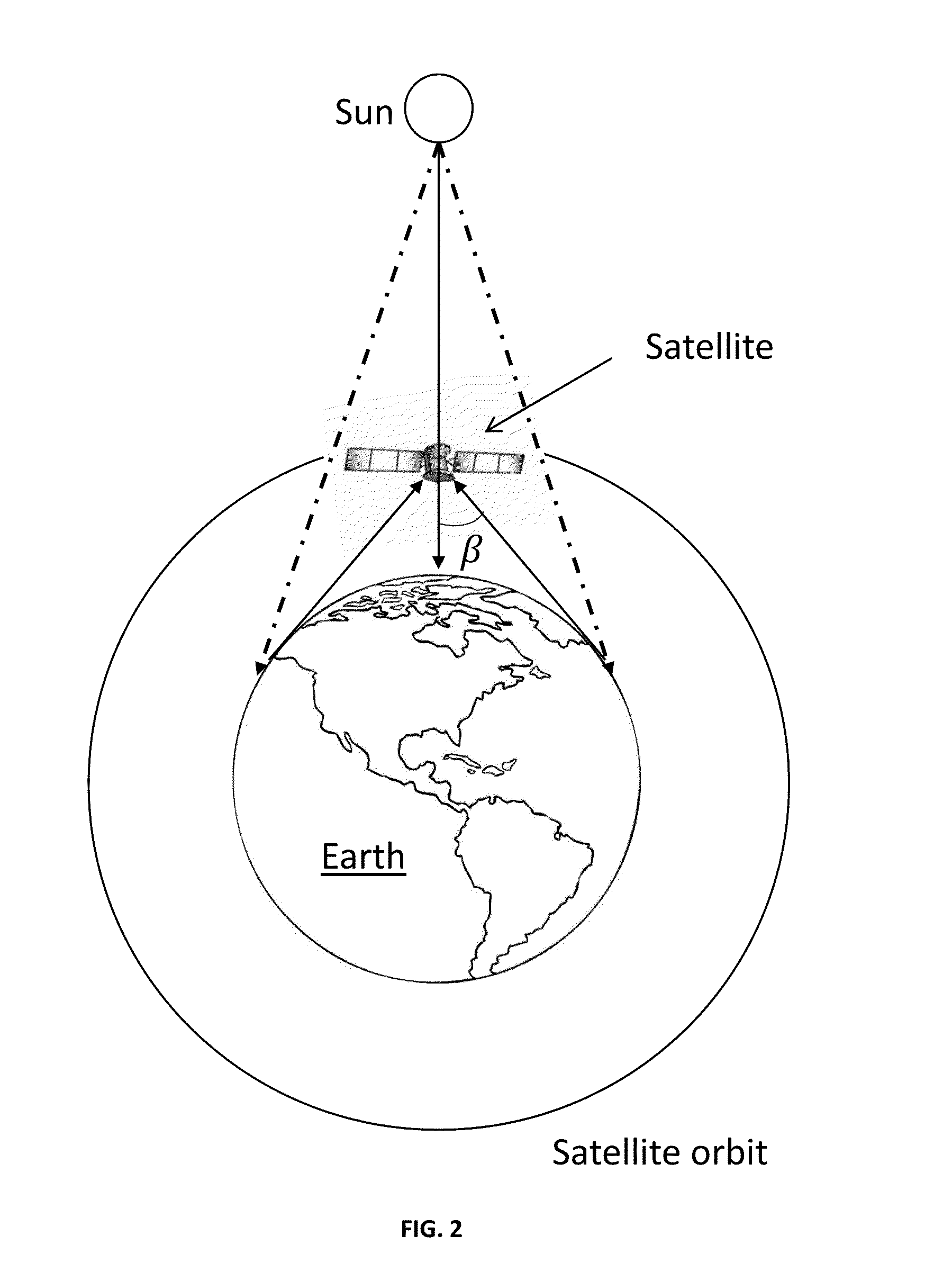Detecting clouds using polarized sunlight
a technology of polarized sunlight and clouds, applied in the field of meteorology and weather detection, can solve the problems of difficult to detect transparent super-thin clouds by satellite imagers, difficulty in detecting low water vapor in atmospheres, and inability to reliably use this method, etc., and achieve the effect of less expensive operation
- Summary
- Abstract
- Description
- Claims
- Application Information
AI Technical Summary
Benefits of technology
Problems solved by technology
Method used
Image
Examples
Embodiment Construction
[0031]The inventors studied solar radiation backscattered from clouds with both satellite data and a radiative-transfer model. They have found that, while the dominant backscattered electric field from the clear-sky Earth-atmosphere system is nearly parallel to the Earth surface, when clouds are present, this electric field can rotate from the parallel to the perpendicular direction. And, more particularly, they identified that a distinct feature, i.e., characteristic of clouds, is responsible for this polarization change. This feature is the result of the optical phenomenon known as a glory. Results of this discovery and initial findings are reported in more detail in the article by W. Sun, G. Videen, and M. I. Mishchenko, titled “Detecting super-thin clouds with polarized sunlight.”Geophys. Res. Lett., 41, no. 2, 688-693 (2014), which was incorporated in and formed a basis of the aforementioned '662 provisional application. The inventors used data obtained from the PARASOL satelli...
PUM
 Login to View More
Login to View More Abstract
Description
Claims
Application Information
 Login to View More
Login to View More - R&D
- Intellectual Property
- Life Sciences
- Materials
- Tech Scout
- Unparalleled Data Quality
- Higher Quality Content
- 60% Fewer Hallucinations
Browse by: Latest US Patents, China's latest patents, Technical Efficacy Thesaurus, Application Domain, Technology Topic, Popular Technical Reports.
© 2025 PatSnap. All rights reserved.Legal|Privacy policy|Modern Slavery Act Transparency Statement|Sitemap|About US| Contact US: help@patsnap.com



